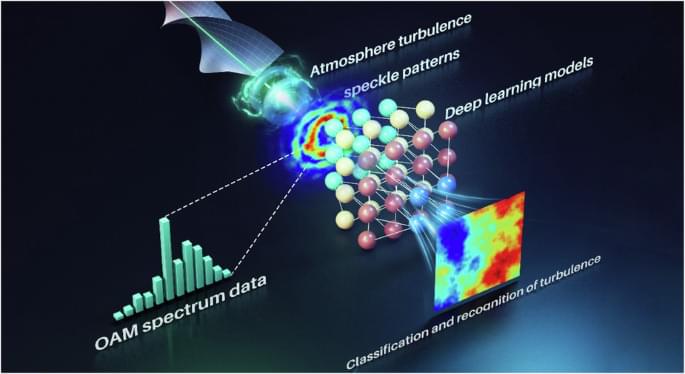AI algorithms analyzes the OAM spectrum and intensity patterns of twisted light as it propagates through a turbulent medium, enabling the detection of the key features of the medium.
A breakthrough in artificial intelligence.
Artificial Intelligence (AI) is a branch of computer science focused on creating systems that can perform tasks typically requiring human intelligence. These tasks include understanding natural language, recognizing patterns, solving problems, and learning from experience. AI technologies use algorithms and massive amounts of data to train models that can make decisions, automate processes, and improve over time through machine learning. The applications of AI are diverse, impacting fields such as healthcare, finance, automotive, and entertainment, fundamentally changing the way we interact with technology.
Physicists turn to supercomputers to help build a 3D picture of the structures of protons and neutrons.
A team of scientists has made exciting advances in mapping the internal components of hadrons. They employed complex quantum chromodynamics and supercomputer simulations to explore how quarks and gluons interact within protons, aiming to unravel mysteries like the proton’s spin and internal energy distribution.
Unveiling the Parton Landscape.
CISA lists critical flaws in Mitel MiCollab (CVE-2024–41713, CVE-2024–55550) and Oracle WebLogic (CVE-2020–2883).
Internet service providers (ISPs) and governmental entities in the Middle East have been targeted using an updated variant of the EAGERBEE malware framework.
The new variant of EAGERBEE (aka Thumtais) comes fitted with various components that allow the backdoor to deploy additional payloads, enumerate file systems, and execute commands shells, demonstrating a significant evolution.
“The key plugins can be categorized in terms of their functionality into the following groups: Plugin Orchestrator, File System Manipulation, Remote Access Manager, Process Exploration, Network Connection Listing, and Service Management,” Kaspersky researchers Saurabh Sharma and Vasily Berdnikov said in an analysis.
Chinese hackers exploited BeyondTrust API keys in a major Treasury cyberattack; CISA confirms no wider federal impact.
Two severe vulnerabilities (CVE-2024–9138, CVE-2024–9140) in Moxa routers risk privilege escalation and command execution.
Outdated BIOS firmware in Illumina iSeq 100 allows attackers to disable devices or install malware, threatening critical genetic research and vaccine.
On Monday, the United Nations’ International Civil Aviation Organization (ICAO) announced it was investigating what it described as a “reported security incident.”
Established in 1944 as an intergovernmental organization, this United Nations agency works with 193 countries to support the development of mutually recognized technical standards.
“ICAO is actively investigating reports of a potential information security incident allegedly linked to a threat actor known for targeting international organizations,” ICAO said in a statement.
A recent campaign targeting browser extensions illustrates that they are the next frontier in identity attacks. Learn more about these attacks from LayerX Security and how to receive a free extension audit.









